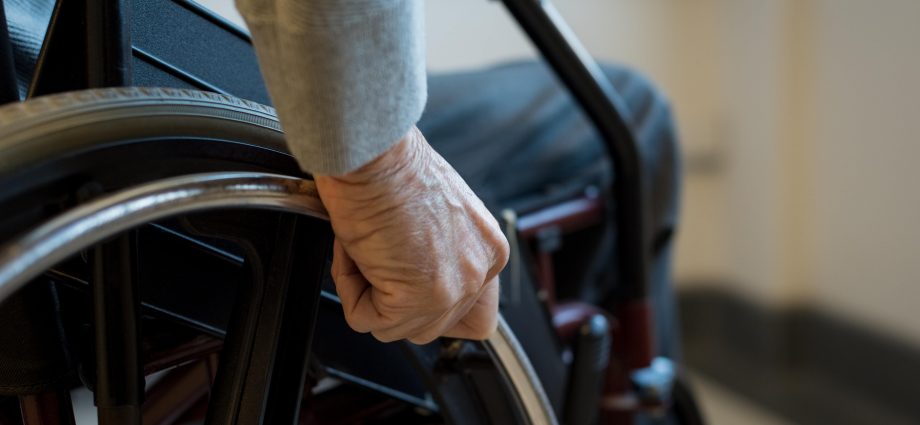THURSDAY, March 30, 2023 (HealthDay News) — Millions of Americans get around with the help of wheelchairs, from those born with disabilities to those who have been struck with disabilities later in life.
Home is a sanctuary for many — a place where comfort, safety and ease are especially important — so remodeling a house for wheelchair access makes sense.
Like with any renovation project, when remodeling for wheelchair access there are a lot of details to consider.
About 1 in 4 Americans has some type of disability, according to the U.S. Centers for Disease Control and Prevention. About 1 in 10 has a mobility disability.
Although about 88% of Americans between the ages of 50 and 80 want to age in their own homes, 47% have given little thought to how they’ll manage that, according to the University of Michigan’s National Poll on Healthy Aging.
Where to start?
“When it comes to adapting a home for wheelchair accessibility, it’s critical to consider both the inside and outside of your home,” according to the UDS Foundation, a Pennsylvania-based nonprofit that helps seniors, veterans and others with disabilities lead more independent lives.
Outside modifications
What’s outside is important because it’s key to getting safely into your home.
In its checklist for wheelchair-friendly home renovation, the UDS Foundation recommends that an entry ramp rise no more than 1 inch per foot. The ramp should be at least 36 inches wide and have secure handrails.
A handicapped parking space will need 48 inches of clearance for loading and unloading a wheelchair. The walkways should also be 48 inches wide, the UDS Foundation recommends.
You should be able to purchase a metal wheelchair ramp online. Local contractors may also be able to build one in wood or concrete, depending on your circumstances.
Installing an aluminum ramp may not require the same builder permits as other ramps, depending on local codes, and it can be acquired and put in quickly, one expert noted.
“They are great for emergencies,” Kurt Clason, a certified aging-in-place specialist with the National Association of Home Builders Remodelers, said in a recent AARP story. “They go up fast and are super stable.”
Widen the doorways
Having a zero-threshold doorway in your home can be helpful, according to the Christopher and Dana Reeve Foundation.
How big are the doorways in your home? If they’re not at least 32 inches wide, they’re not wide enough for a wheelchair.
The American Disabilities Association guidelines for the width of doors for wheelchair access are that they should “have a minimum clear opening of 32 inches with the door open 90 degrees, measured between the face of the door and the opposite stop.”
The front door, in particular, should be at least 36 inches wide with 32 inches of clearance and a door handle that is easy to grasp, the UDS Foundation recommends.
Widening doorways can cost about $700 to $2,500 per door, according to the website Home Advisor.
Three key spaces
The bedroom, bathroom and kitchen are all important spaces that may have to be adjusted to be wheelchair-accessible.
Though a stair chair lift may be an option for some, having living space that is either single-story or at least has a bedroom and a handicap-accessible master bath on the first floor can be helpful.
Keep a clear 3-foot pathway on each side of the bed, the UDS Foundation recommends. The mattress should not be higher than 22 inches off the floor.
Closet doors should be sliding. Shelves should be no more than 18 inches deep, according to the UDS Foundation.
Safety in the bathroom requires thought as well.
Grab bars should be sturdy and installed at sitting and standing heights, according to the Christopher and Dana Reeve Foundation.
The sink should be 34 inches from the floor, with 29 inches of clearance along the sink edge, and the toilet should be mounted 33 to 36 inches from the floor, with a seat that’s 17 inches to 19 inches from the floor, according to UDS Foundation.
Shower stalls should be curbless, meaning a roll-in or walk-in type of shower with a graded floor that is slightly sloped to drain water, according to the Reeve Foundation. There should have enough cubic feet of space to easily navigate inside the shower. A shower seat should be about 17 inches to 19 inches from the floor. Transferring first to a roller shower chair can be helpful, according to the Reeve Foundation. The shower head should have a hose that’s at least 5 feet long.
Dispensers instead of shampoo bottles can be helpful, according to the Reeve Foundation.
Consider also installing non-slip flooring, better lighting and a telephone or medical alert system, the Reeve Foundation suggests.
Making a bathroom wheelchair-accessible can cost an average of $9,000, according to Home Advisor.
In the kitchen, ways to make the space wheelchair-accessible include changes to cabinetry, replacing lower cabinets with full-extension drawers and doorless fixed shelves and including leg room areas under the counters and sink, according to the UDS Foundation. Everything should be usable from wheelchair-height, including the sink, counters and appliances.
Copyright © 2026 HealthDay. All rights reserved.

